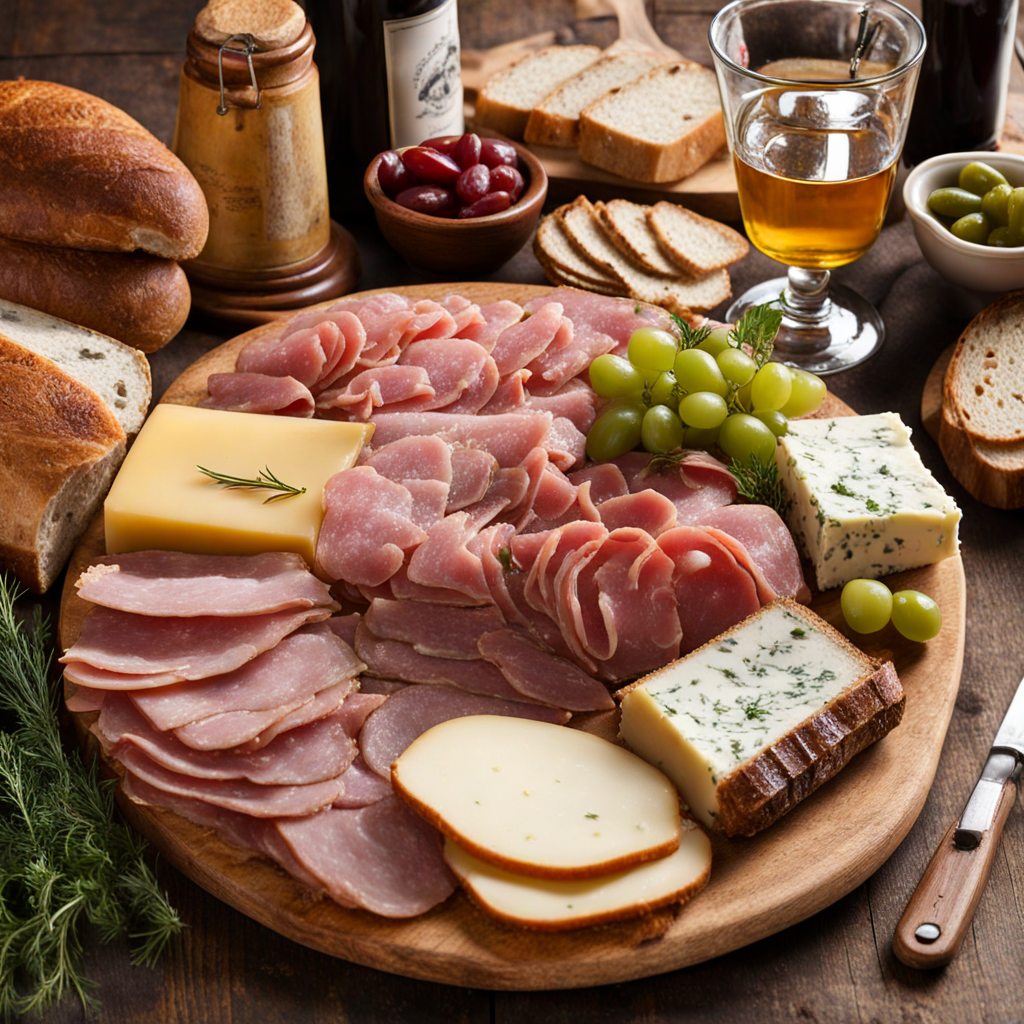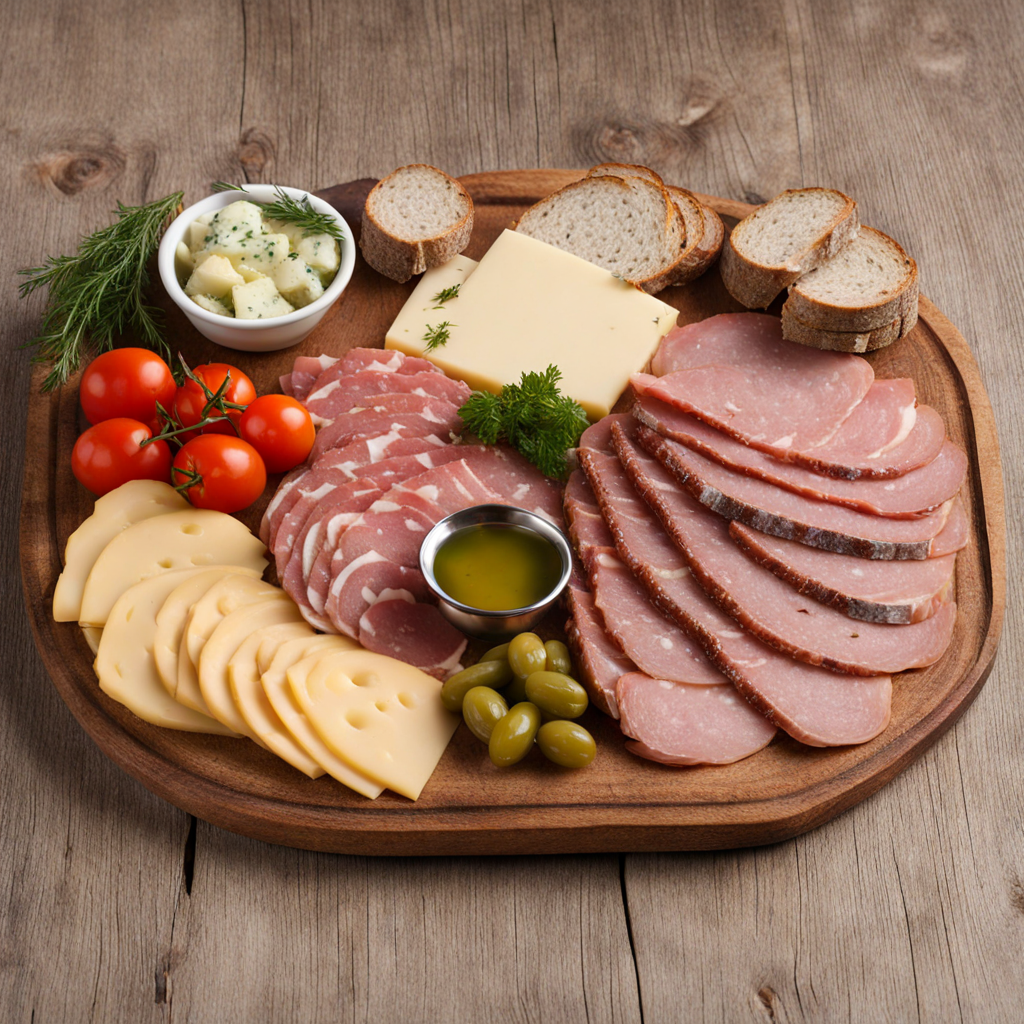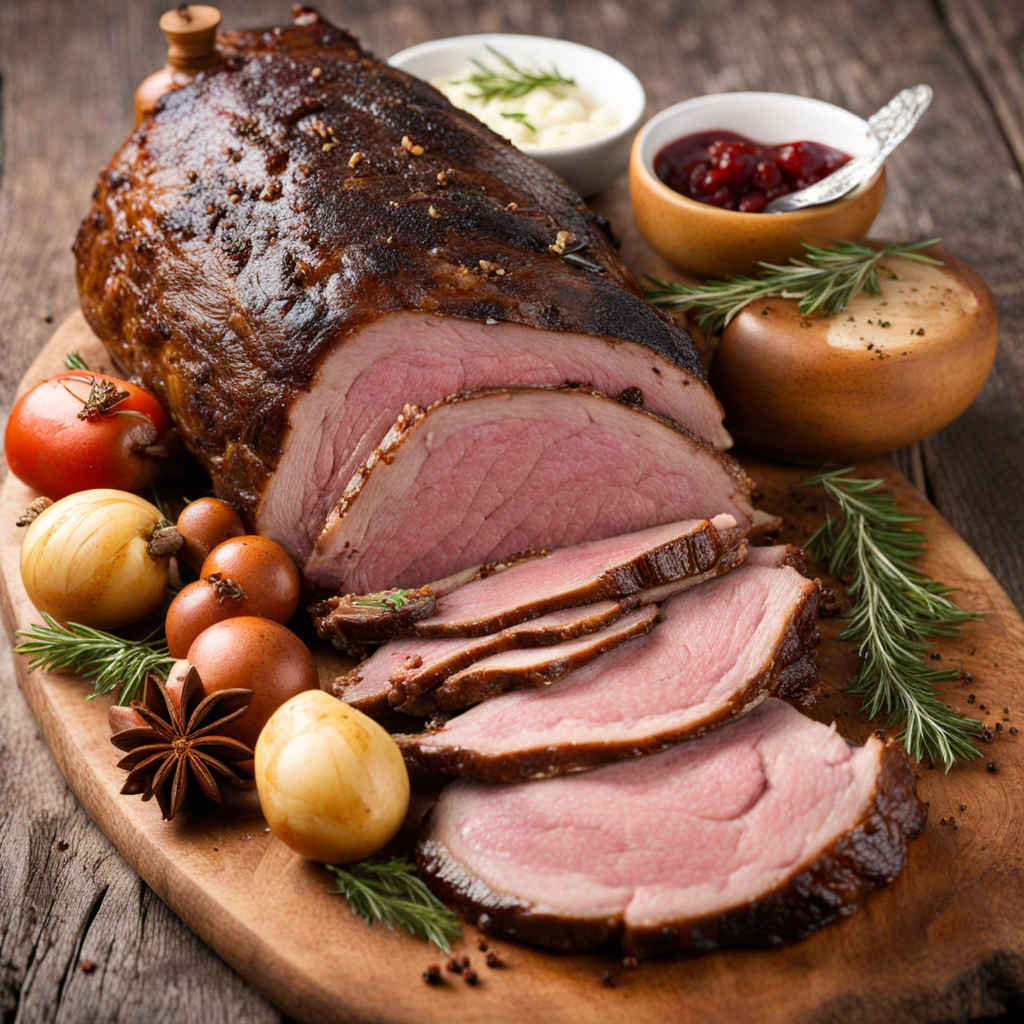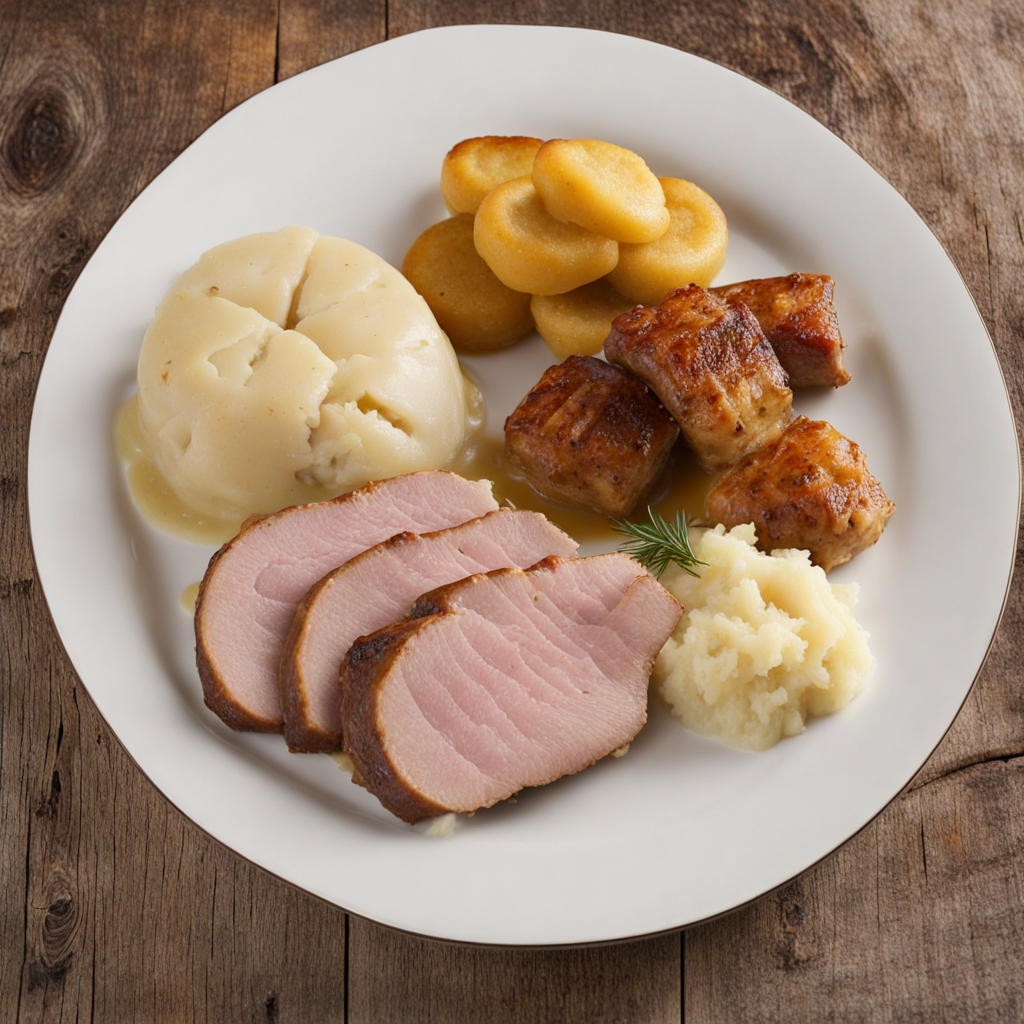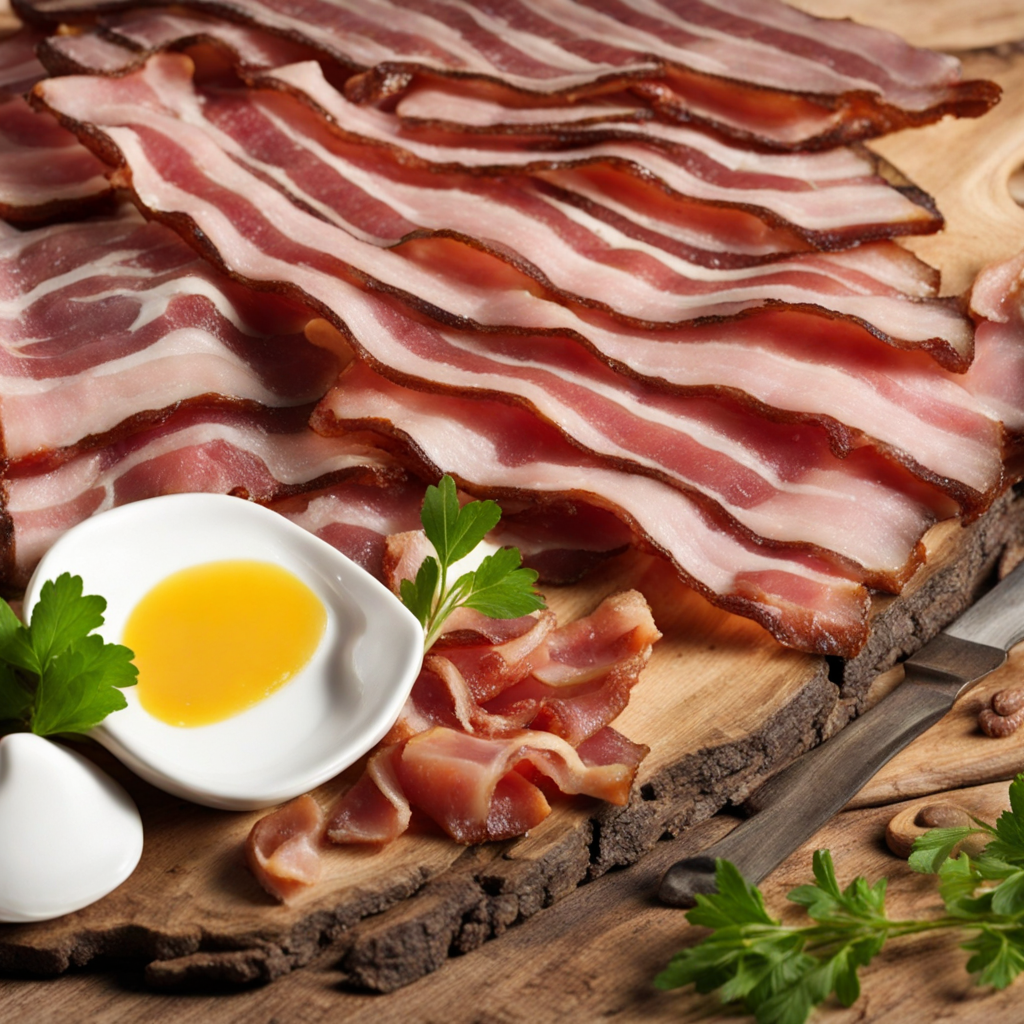Brettljause
Brettljause is a delightful Austrian snack that embodies the rustic charm of Alpine cuisine. This traditional platter is typically enjoyed in the late afternoon and is perfect for sharing, making it a social culinary experience. At its core, Brettljause consists of a variety of cured meats, such as speck (cured pork), salami, and maybe even some house-made sausages. These savory meats are often accompanied by slices of flavorful cheese, like the nutty and creamy Almkäse, which adds a rich dimension to the dish. Freshly baked bread, often a hearty rye or a crusty roll, serves as the perfect vehicle for indulging in the flavorful bites. In addition to meats and cheeses, a Brettljause platter often features a selection of pickles and spreads that enhance the overall experience. Tangy pickled cucumbers, sweet bell peppers, and robust horseradish provide a refreshing contrast to the richness of the meats and cheeses, making each bite a delightful exploration of flavors. House-made spreads, such as a creamy garlic or herbed butter, add layers of taste that elevate the dish further. Fresh produce, like apples or tomatoes, might be included for a touch of brightness and balance, ensuring that the plate is not only satisfying but also visually appealing. This hearty snack is often enjoyed with a glass of local beer or a crisp white wine, making it a perfect accompaniment to any casual gathering. The communal nature of Brettljause encourages diners to mix and match their bites, creating personalized combinations that celebrate the fresh, high-quality ingredients typical of Austrian cuisine. Whether enjoyed on a hike through the beautiful Austrian countryside or at a cozy tavern, Brettljause offers a taste of tradition that is sure to delight anyone looking to explore new culinary horizons.
How It Became This Dish
The History of Brettljause: Austria's Rustic Culinary Delight Brettljause, a traditional Austrian dish, embodies the essence of Alpine hospitality and the rich agricultural heritage of the region. Originating from the Tyrolean and Salzburg areas, Brettljause is more than just a meal; it is a cultural phenomenon that represents the communal spirit and the simple pleasures of life in the Austrian countryside. This essay delves into the origins, cultural significance, and development of Brettljause over time, showcasing its importance in the culinary landscape of Austria. #### Origins of Brettljause The term "Brettljause" is derived from the German word "Brett," meaning board or plank, and "Jause," which translates to a snack or light meal. It is traditionally served on a wooden board, making it a visually appealing and rustic dish that reflects the agrarian lifestyle of the Austrian people. The origins of Brettljause can be traced back to the late 19th and early 20th centuries, a time when farmers and herders would take breaks during their laborious work in the fields or mountains. They would often prepare simple yet hearty meals using locally sourced ingredients, which could easily be transported and consumed outdoors. The traditional Brettljause typically consists of a variety of cured meats, cheeses, pickles, and bread, all artfully arranged on a wooden platter. Cured meats such as speck (smoked ham), salami, and sausages are staples, often complemented by regional cheeses like Tiroler Graukäse. Accompaniments may include homemade pickles, spreads like butter or lard, and fresh bread, often crusty and rustic in nature. The simplicity of the ingredients reflects the resourcefulness of rural communities, where nothing went to waste, and everything was utilized to create a fulfilling meal. #### Cultural Significance Brettljause holds significant cultural importance in Austria, particularly in the Tyrol and Salzburg regions. It represents the values of community and togetherness, often served during gatherings, celebrations, or after a day of hiking in the mountains. The act of sharing a Brettljause reflects the warmth of Austrian hospitality, where friends and family come together to enjoy good food and each other’s company. In contemporary Austria, Brettljause is often enjoyed in alpine huts or traditional taverns, where patrons can relish the flavors of the region while surrounded by stunning natural landscapes. The dish has become synonymous with leisure and relaxation, embodying the Austrian ethos of "Gemütlichkeit," a term that captures the spirit of coziness, comfort, and belonging. Whether enjoyed in a bustling tavern or a serene mountain setting, Brettljause brings people together, reinforcing social bonds and celebrating the joys of simple, hearty food. #### Development Over Time As Austria evolved through the 20th century, so too did the Brettljause. While it began as a humble meal for farmers, it gradually gained recognition as a beloved culinary tradition. The rise of tourism in the Austrian Alps played a crucial role in popularizing Brettljause beyond its rural roots. Visitors to the region sought authentic experiences, and the traditional Brettljause became a centerpiece of alpine gastronomy. In the post-World War II era, there was a resurgence of interest in traditional food as a way to reconnect with cultural heritage. This movement saw Brettljause being celebrated in cookbooks, festivals, and culinary events, further solidifying its place in the Austrian culinary canon. The dish began to evolve, with chefs and home cooks experimenting with different ingredients and presentation styles. While the core components remained intact, modern interpretations began to emerge, showcasing the versatility of Brettljause. Today, Brettljause is often featured on restaurant menus and at food festivals, where chefs highlight locally sourced, organic ingredients, reflecting a growing trend toward sustainability and farm-to-table dining. This contemporary approach honors the dish's rustic origins while embracing innovative culinary techniques. Vegan and vegetarian versions have also emerged, catering to the diverse dietary preferences of modern diners, incorporating seasonal vegetables, plant-based spreads, and artisanal breads. #### Brettljause in Contemporary Austria In contemporary Austria, Brettljause continues to be a beloved staple, enjoyed by locals and tourists alike. It is often served as an appetizer or light meal, ideal for sharing among friends. The dish has transcended its humble beginnings, becoming a symbol of the rich culinary culture of Austria. Food festivals celebrating regional specialties frequently feature Brettljause, allowing visitors to experience the flavors of the Tyrolean and Salzburg regions. Moreover, the rise of social media has played a significant role in revitalizing interest in traditional dishes like Brettljause. Influencers and food bloggers showcase beautifully arranged Brettljause boards, inspiring a new generation to embrace and share this culinary tradition. The aesthetic appeal of the dish, with its vibrant colors and varied textures, makes it a favorite for Instagram-worthy dining experiences. As the world becomes increasingly globalized, the appreciation for local and traditional foods has grown. Brettljause serves as a reminder of the importance of culinary heritage, encouraging a deeper understanding of the cultural significance behind the food we eat. It reflects the values of sustainability, community, and the celebration of local produce, resonating with contemporary diners who seek authentic experiences. #### Conclusion Brettljause is more than just a meal; it is a reflection of the rich agricultural heritage and communal values of Austria. From its humble origins as a farmer's snack to its status as a cherished culinary tradition, Brettljause has evolved over time, embracing modern influences while honoring its rustic roots. As it continues to captivate the hearts and palates of locals and visitors alike, Brettljause stands as a testament to the enduring power of food to bring people together, celebrate culture, and create lasting memories in the beautiful landscapes of Austria.
You may like
Discover local flavors from Austria


